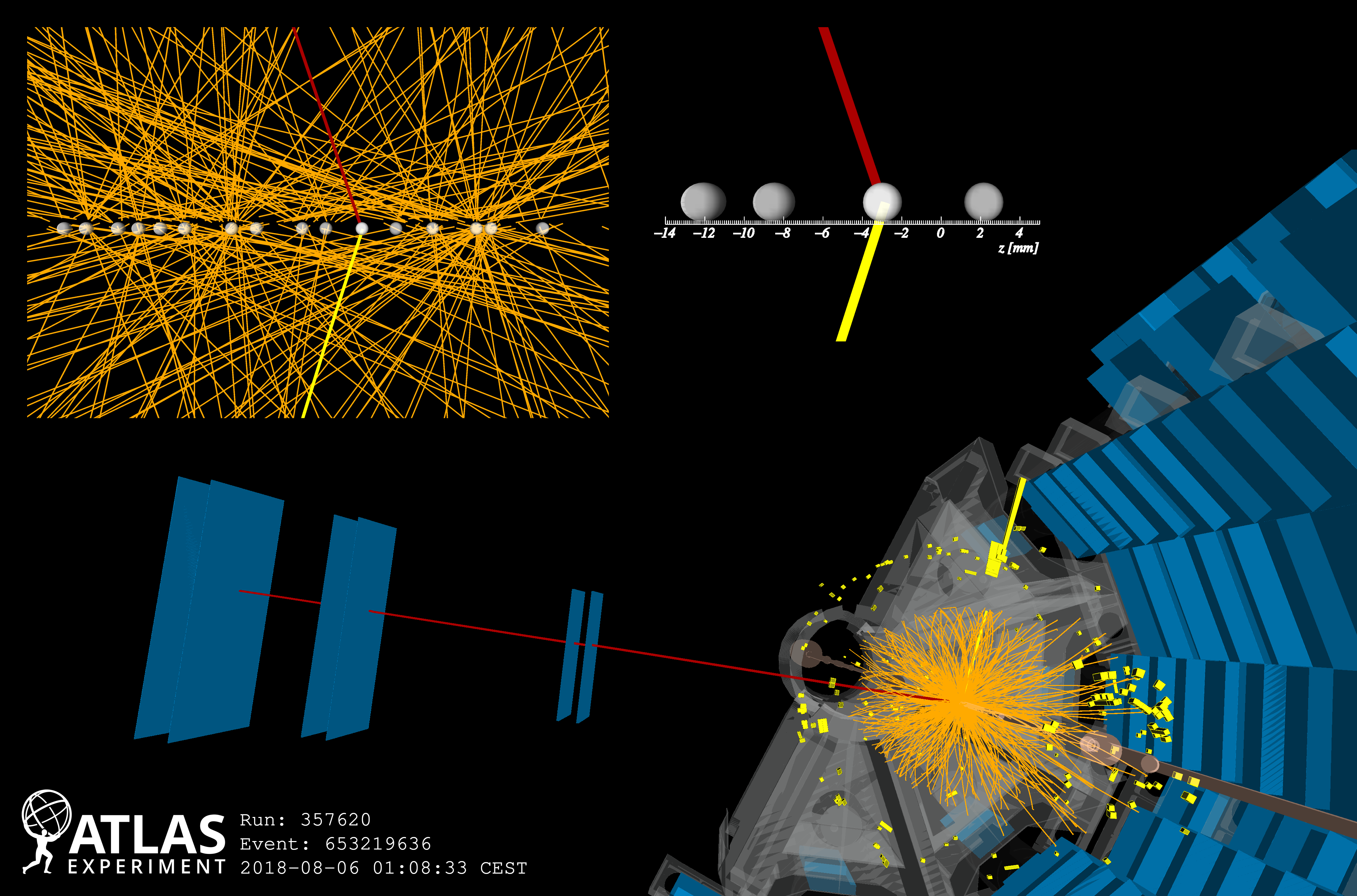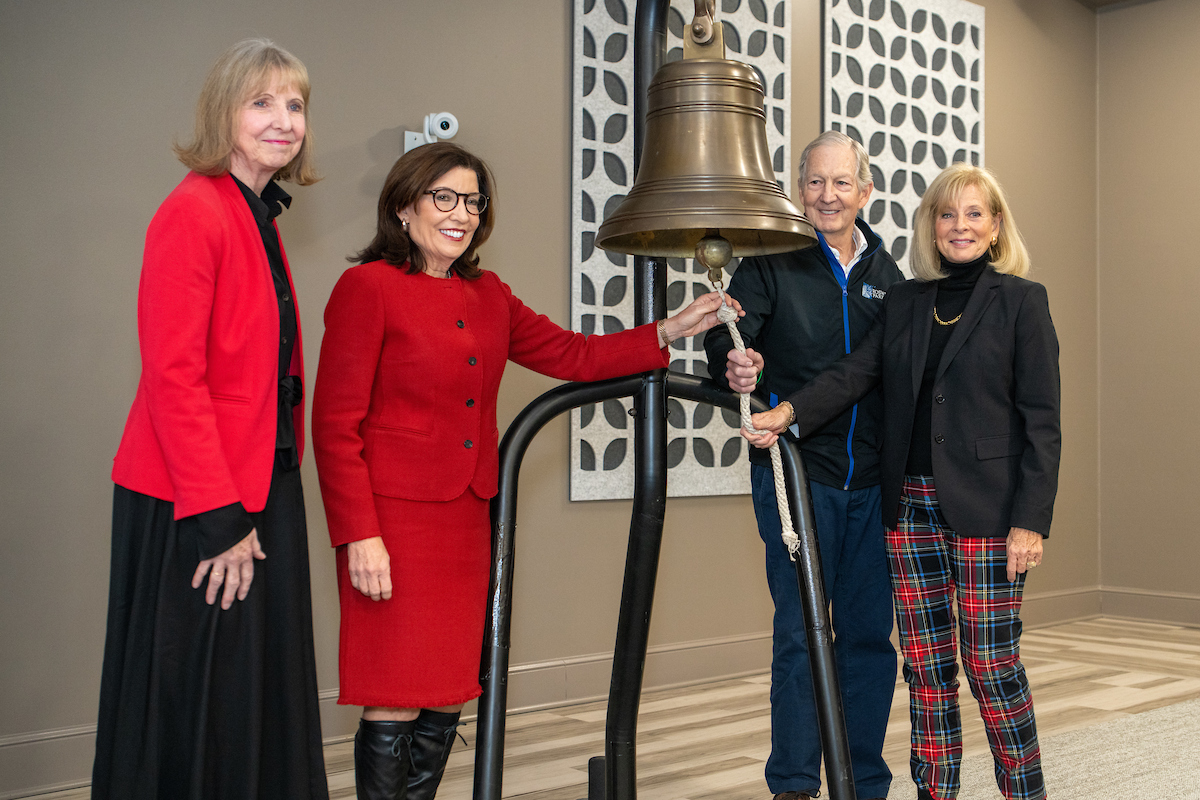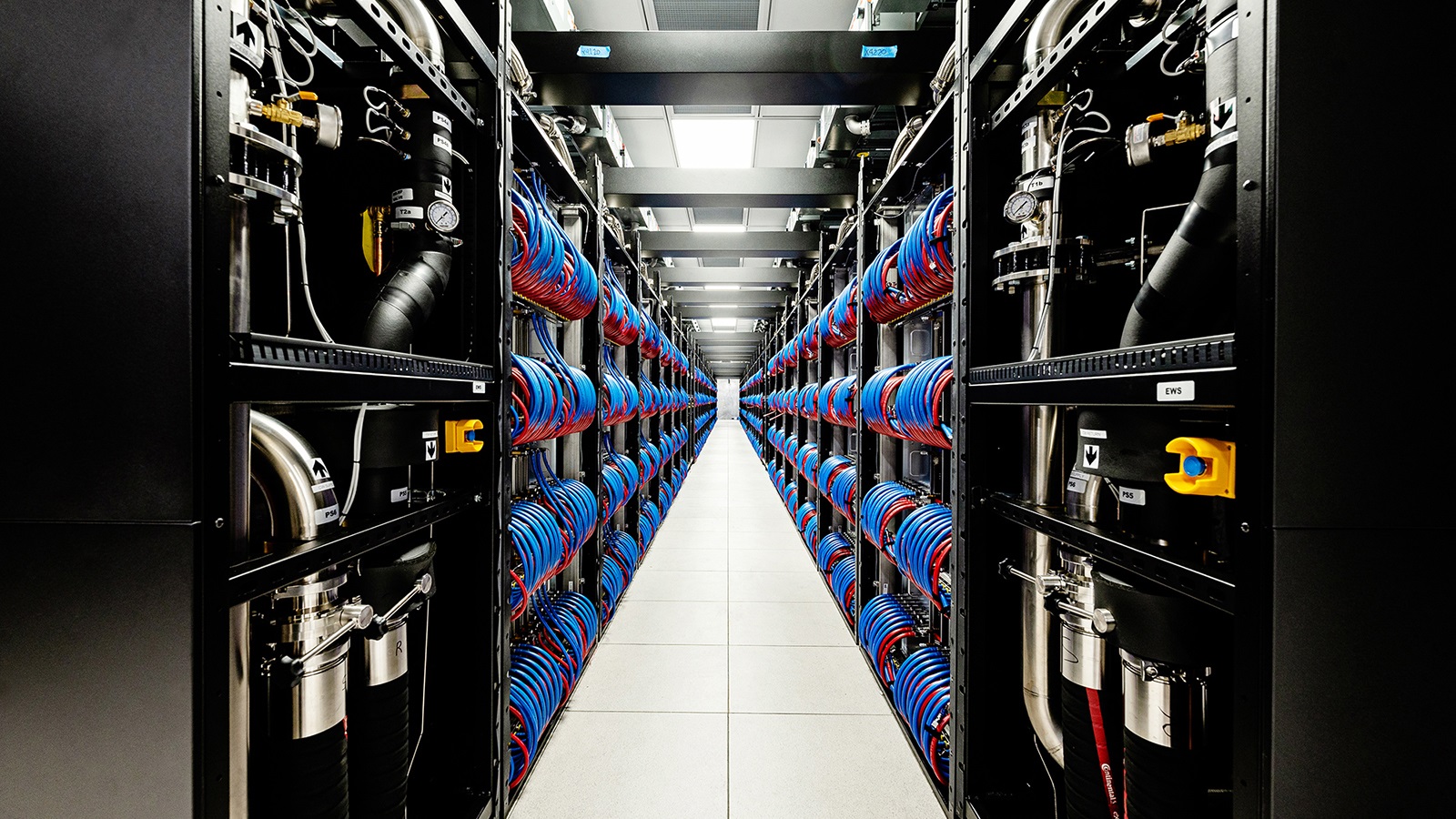Simone Pagan Griso, a Berkeley Lab physicist and Divisional Fellow who coordinated the efforts of the Berkeley Lab team, said his team found about 174 particle interactions that are consistent with the creation of pairs of heavy force-carrying particles called W bosons from the collision of two photons.
Photons are particles of light that carry the electromagnetic force, which is the fundamental force associated with magnetism and electricity. W bosons carry the weak force, which is associated with the fusion that powers the sun, and with a nuclear reaction called nuclear fission that takes place in nuclear power plant reactors.
From 2015 to 2018, only about one of the approximately 30 trillion proton interactions measured at the ATLAS detector at CERN’s Large Hadron Collider (LHC) would produce W boson pairs from the interaction of two photons per data-taking day, Pagan Griso said.
The LHC is designed to accelerate and collide protons, which are positively charged particles found in atomic nuclei. The acceleration of bunches of these particles to nearly the speed of light produces strong electromagnetic fields that accompany the proton bunches and act like a field of photons. So when these high-energy photon bunches pass very closely at the LHC, their electromagnetic fields may interact, causing what’s known as an “ultra-peripheral collision.”
Unlike the destructive proton-proton particle collisions that are used to generate a swarm of constituent particles and lead to particle interactions that are typically studied at the LHC, these ultra-peripheral collisions are more like rocks skipping across a surface. The interacting fields produce “quasi-real” photons, which are effects that resemble genuine photons in their characteristics but are not actual particles.
In this latest analysis, the researchers focused on those rare occasions when the quasi-real photons produced pairs of W bosons.
“It’s around 1,000 times less likely to happen than a quark-initiated W boson pair creation,” he noted, which presented a challenge in filtering out these more common types of interactions.
“We had to be able to predict how much background we expected relative to a signal, and all of the other interactions that happen nearby,” he said. “This meant a lot of modeling and simulations to understand what different phenomena will look like.” Ultimately, the W boson pairs produced from the photon-photon interactions decayed down to an electron and a muon, a particle in the same class as the electron but with a mass 200 times greater.
Also participating in Berkeley Lab’s analysis were Aleksandra Dimitrievska, a postdoctoral researcher and Chamberlain Fellow in the Physics Division; William Patrick Mccormack, a Ph.D. student at UC Berkeley and a Berkeley Lab researcher; and Maurice Garcia-Sciveres and Juerg Beringer, who are both senior staff scientists at Berkeley Lab.
Pagan Griso noted that there was some hint for the production of W boson pairs from photon pairs in earlier data-taking at the LHC, though it was far less conclusive than this latest analysis.
“We wrote this measurement from A to Z,” Pagan Griso said of the Berkeley Lab team involved in the studies. “We literally were involved in the entire spectrum of this analysis.”
He added, “With even more data expected at the LHC in the future, we can probe this even better,” and learn more about the production rate of W boson pairs from photon-photon interactions, and the strength of the self-interaction among these four bosons, which is a stringent test of the Standard Model of particle physics. The team will also try to improve its analysis techniques, he said.
Pagan Griso and other members of the Berkeley Lab ATLAS Group started the analysis, together with international collaborators, about a year and a half ago, he said. These recent results are preliminary and the study will soon be submitted to a scientific journal.
More
- “LHC Creates Matter From Light,” Symmetry magazine, Aug. 24, 2020
- ATLAS observes W-boson pair production from light colliding with light
- Observation of W boson pair production in photon pair collisions at 13 TeV using the ATLAS detector
- Rare phenomenon observed by ATLAS features the LHC as a high-energy photon collider
###
Founded in 1931 on the belief that the biggest scientific challenges are best addressed by teams, Lawrence Berkeley National Laboratory and its scientists have been recognized with 13 Nobel Prizes. Today, Berkeley Lab researchers develop sustainable energy and environmental solutions, create useful new materials, advance the frontiers of computing, and probe the mysteries of life, matter, and the universe. Scientists from around the world rely on the Lab’s facilities for their own discovery science. Berkeley Lab is a multiprogram national laboratory, managed by the University of California for the U.S. Department of Energy’s Office of Science.
DOE’s Office of Science is the single largest supporter of basic research in the physical sciences in the United States, and is working to address some of the most pressing challenges of our time. For more information, please visit energy.gov/science.




